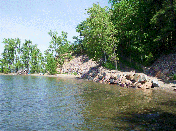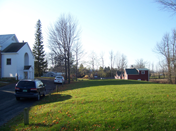Welcome to buermann engineering
Buermann Engineering provides timely and cost-effective civil engineering services for cottage/home conversions, subdivisions and residential/commercial site development. From initial feasibility investigations through plan preparation, permitting, and construction-phase inspections, our 20+ years of experience will guide your project through the complex requirements for water supply, wastewater disposal, stormwater treatment, roads, wetlands and Act 250.
Some HistoryThe septic tank system is believed to have originated in the country of France. John Mouras is credited for inventing the septic tank system on or around the year 1860. Mouras designed a septic tank and built a prototype fabricated from concrete and also fabricated piping constructed of clay leading from his home to the septic tank located in his yard. Approximately 10 years later John Mouras dismantled the unit and to the astonishment of his fellow townsmen found that the tank was virtually empty of any solid organic waist and only contained a liquid effluent scum layer. Eventually Mouras approached a scientist of the era and Mr. Mouras submitted a patent application and was granted a paten in the year 1881. The septic tank made its way to the United States of America in 1883 and some time after to Africa, believed by the British Navy A simple standard septic tank is typically 1000 to 2000 gallons. The tank will have typically two inspection openings one inlet opening coming from the house and one outlet opening going the distribution box. The distribution box is the junction between the septic system to the drain field and distribute the digested effluent material to the drain field. There are three layers of waste in the septic system. The top layer typically floats and is considered the scum layer until to digest and falls to the bottom. The bottom layer is called the sludge layer. There is the liquid layer that lays in between the scum and the sludge layers. This is also referred to as the effluent layer. If not properly maintained, this is also the layer that is most likely to give you the sewer smell or seep through the top of the leach field if the field is clogged and not functioning properly |
How a system works
A Septic System is the combination of a Septic Tank and a Leaching System. A Leaching System might be Leach Lines, Leach Beds or Seepage Pits. Sometimes the term "Cesspool" is used. Technically, a Cesspool has no Septic Tank upstream. Today, a Cesspool is installed only for temporary purposes. Seepage Pits are also referred to as "Drywells". However, Drywells typically handle no sewage. Drywells are used to re-introduce storm water into the ground.
Everything from the home first enters the Septic Tank. Sewage enters at the top portion of the Septic Tank and exits at the top portion of the tank. It is in this liquid environment that bacteria do its work of breaking down most solids into a liquid called effluent. Effluent exits the tank and enters the leaching system where it percolates (seeps) back into the groundSeptic Tanks are designed to handle all the normal, daily (24 Hour) effluent flow which a household can produce. There are advantages to installing a larger Septic Tank. Longer detention times, (due to the larger capacity), permit better separation and less carry-over of scum and sludge and tend to prolong the life of the leaching system..
Once again Thank you for visiting our site. We are glad that you stopped in. If there is anything that we can help you with or any questions that you have please do not hesitate to call our office or send me an email.






